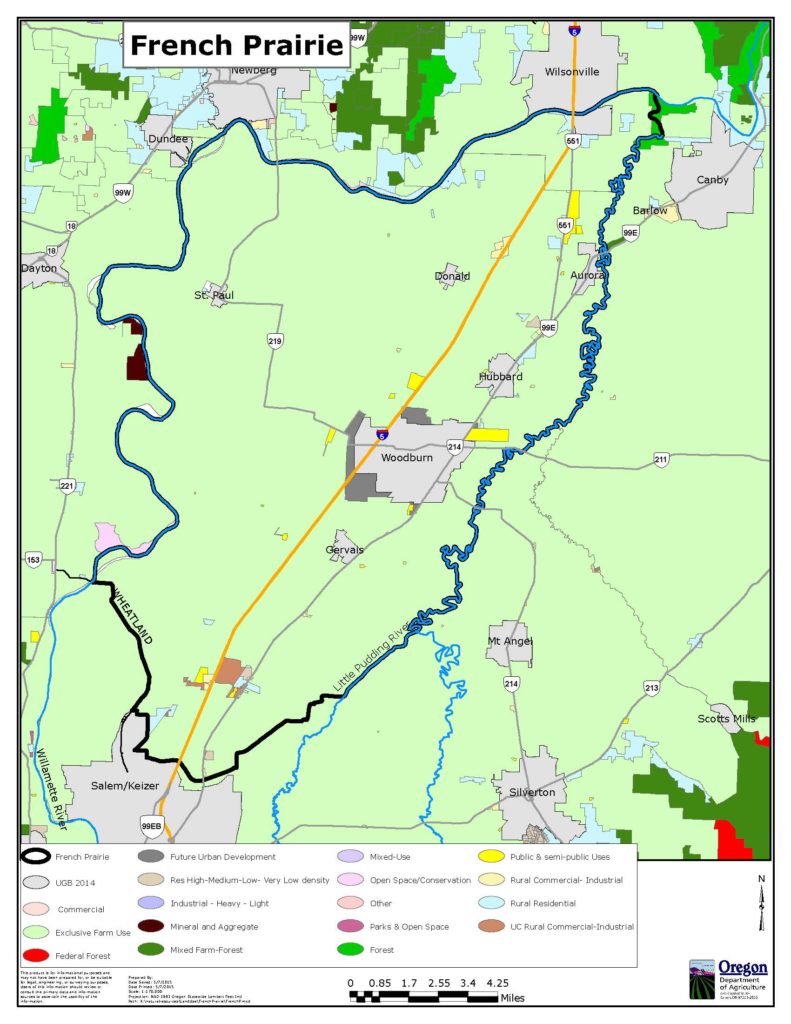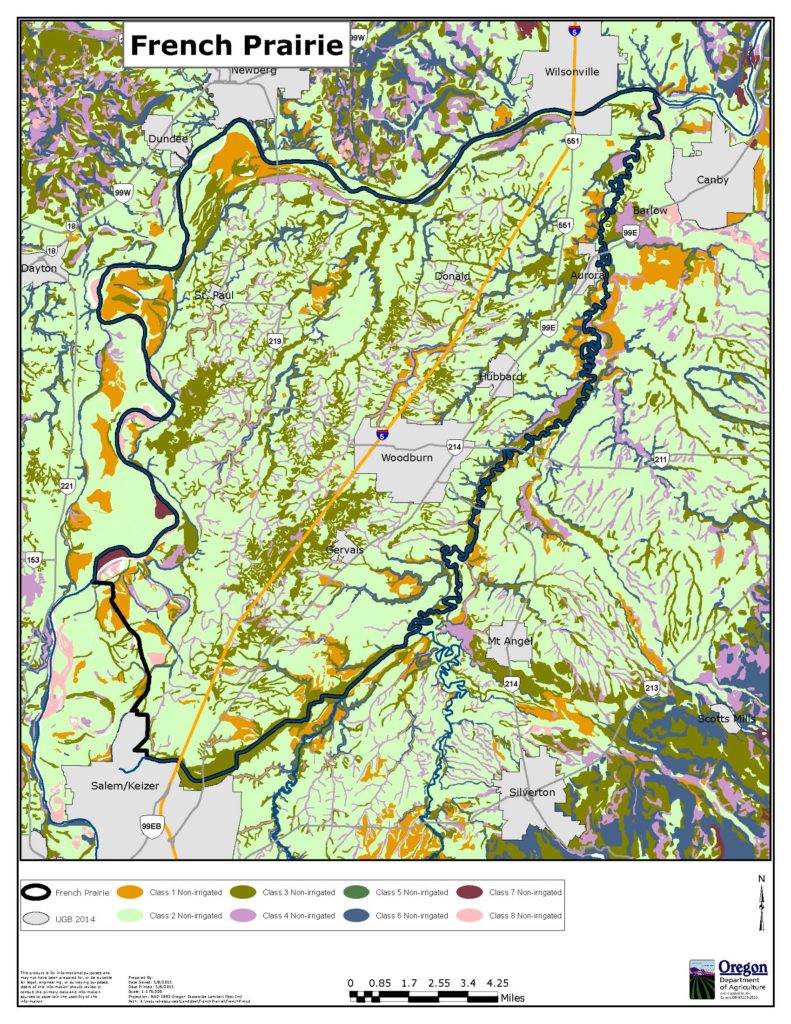French Prairie has among the best quality soils in the United States, the result of deposition of high quality soil in the Willamette Valley during the Missoula Flood some 10,000 years ago. Generally speaking the soil quality is highest to the north (in French Prairie) and decreases to the south. In addition to soil quality, additional factors making French Prairie land “prime farmland” is the availability of water combined with an overall mild climate.
The US Department of Agriculture defines Prime Farmland as:
Land that has the best combination of physical and chemical characteristics for producing food, feed, forage, fiber, and oilseed crops and that is available for these uses. It has the combination of soil properties, growing season, and moisture supply needed to produce sustained high yields of crops in an economic manner if it is treated and managed according to acceptable farming methods. In general, prime farmland has an adequate and dependable water supply from precipitation or irrigation, a favorable temperature and growing season, an acceptable level of acidity or alkalinity, an acceptable content of salt or sodium, and few or no rocks. Its soils are permeable to water and air. Prime farmland is not excessively eroded or saturated with water for long periods of time, and it either does not flood frequently during the growing season or is protected from flooding.
About one half of the soils in the Willamette Valley are “Willamette Silt Loam,” deep, well-drained soils with lots of organic matter.
French Prairie Zoning
The vast majority of land in French Prairie is zoned Exclusive Farm Use (EFU) due to these characteristics, as illustrated in this map from Oregon Department of Agriculture:
This map also illustrates the historic boundaries of French Prairie, the Willamette River on the north and west, the Pudding River on the east, and the Little Pudding River/Lake Labish on the south.
French Prairie Soil Maps The agricultural capability of soils are designated by the USDA in classes, based on characteristics of the soils within specific areas and their capability to produce common cultivated crops and pasture plants without deteriorating over a long period of time. The USDA definitions of soil Classes is:
- Class 1 soils have few limitations that restrict their use.
- Class 2 soils have moderate limitations that reduce the choice of plants or that require moderate
- conservation practices.
- Class 3 soils have severe limitations that reduce the choice of plants or that require special
- conservation practices, or both.
- Class 4 soils have very severe limitations that reduce the choice of plants or that require very careful
- management, or both.
- Class 5 soils are subject to little or no erosion but have other limitations, impractical to remove,
- that restrict their use mainly to pasture, rangeland, forestland, or wildlife habitat.
- Class 6 soils have severe limitations that make them generally suiitable for cultivation and that restrict their use mainly to pasture, rangeland, forestland, or wildlife habitat.
- Class 7 soils have very severe limitations that make them unsuitable for cultivation and that restrict their use mainly to grazing, forestland, or wildlife habitat.
- Class 8 soils and miscellaneous areas have limitations that preclude commercial plant production and that restrict their use to recreational purposes, wildlife habitat, watershed, or esthetic purposes.
Quality classification of soils is directly correlated with available water for farming, so they are frequently mapped in terms of irrigated (dependable water supply and of adequate quality) or non-irrigated (inadequate water supply for irrigation). Regardless of availability of irrigation water, most French Prairie soils are considered prime or high value.
Irrigated Soil Types: The majority of Prime Farmland in French Prairie is Class 1, 2 and 3 soil types, as this map based on irrigated status from Oregon Dept. of Agriculture shows:
Of note, very little of French Prairie has Class 4 or worse soil types.
Non-Irrigated Soil Types: Equally striking is the view of soil types mapped by in terms of non-irrigated status:
The status of soil classification changes very little between the two maps because most of French Prairie ag land is comprised of Class I, 2 and 3 soils irrespective of irrigation.



